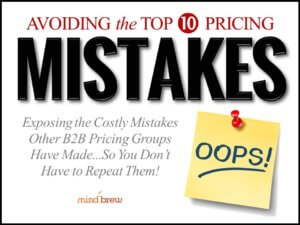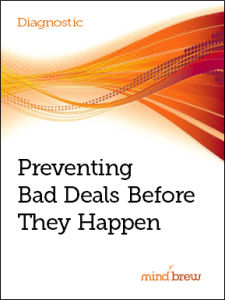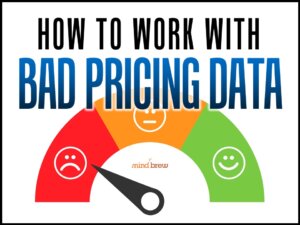On a scale from one to ten, how good are your company’s prices?
It’s hard to pin a number on it, isn’t it? That’s because most pricing teams don’t really know how good their prices are. They have a general idea that they’re doing “pretty good,” but that they could be doing better.
When they try to judge quantitatively how good their prices are, most companies take one of the following three approaches. And, spoiler alert, all three of these methods stink.
1. Financial Performance. A lot of firms default to using the company’s bottom line as a proxy for judging their pricing performance. If revenues, profits, and the stock price all look good, they assume they must doing a good job of pricing. And if those numbers start to fall, they fiddle with their prices until the financial performance gets back on track.
The problem with this approach is that there are a ton of factors outside of the pricing team’s control that affect a company’s financial performance. Maybe the entire economy has tanked. Maybe management has added more staff than the company can support. Maybe a competitor has cut prices so low that they are growing market share but will soon be out of business. Any one of these or a million other circumstances could affect the company’s financial performance without necessarily indicating that the company has a problem with its prices. Inversely, maybe your financial performance is strong, but your prices are leaving a lot of money on the table.
Bottom line: While it’s important for pricing pros to be aware of the company’s overall performance, you can’t use these big picture financial metrics to tell you how good your prices are.
2. Pricing Trends. Once organizations realize that they can’t use overall financial metrics to judge pricing performance, they naturally start looking at metrics that are a little closer to the pricing function. They track margins, price attainment, or win-loss rates over time.
While these numbers are a little more informative, they can only tell you whether or not you are improving, not whether your prices were any good to start with.
Imagine your son Johnny brought home a report card that said his performance in math had improved 10% during the quarter. That seems like good news. But what if Johnny’s grade started out as a 50%? A 10% improvement would only put him at 55%—still failing math.
In the same way, tracking margins can tell you whether you are getting better, but not whether your pricing efforts should get a passing or failing grade.
3. Customer or Salesperson Feedback. When they realize that the numbers they are tracking don’t really tell them how good or bad their prices are, some pricing teams decide just to ask their customers or salespeople.
Unfortunately, both of these groups almost always believe that prices are too high. And customers are never going to tell you that they are willing to pay more for your goods and services. They really aren’t a reliable indicator of pricing quality at all.
So if none of these methods work, what should B2B pricing teams be doing instead?
Calculating your price elasticity.
In simple terms, price elasticity in B2B is a measure of how a change in price affects the quantity of goods and services sold. It can tell you where to set your prices if you want to move a given quantity of product or how much you will sell if you raise or lower prices by a given amount.
Of course, calculating price elasticity can be a tricky business. But it’s not as hard as most B2B pricing practitioners think. We have a webinar called Business-to-Business Price Elasticity that explains the process in depth. It’s a great place to start if you want to know whether you are doing a good job with pricing—or not.














